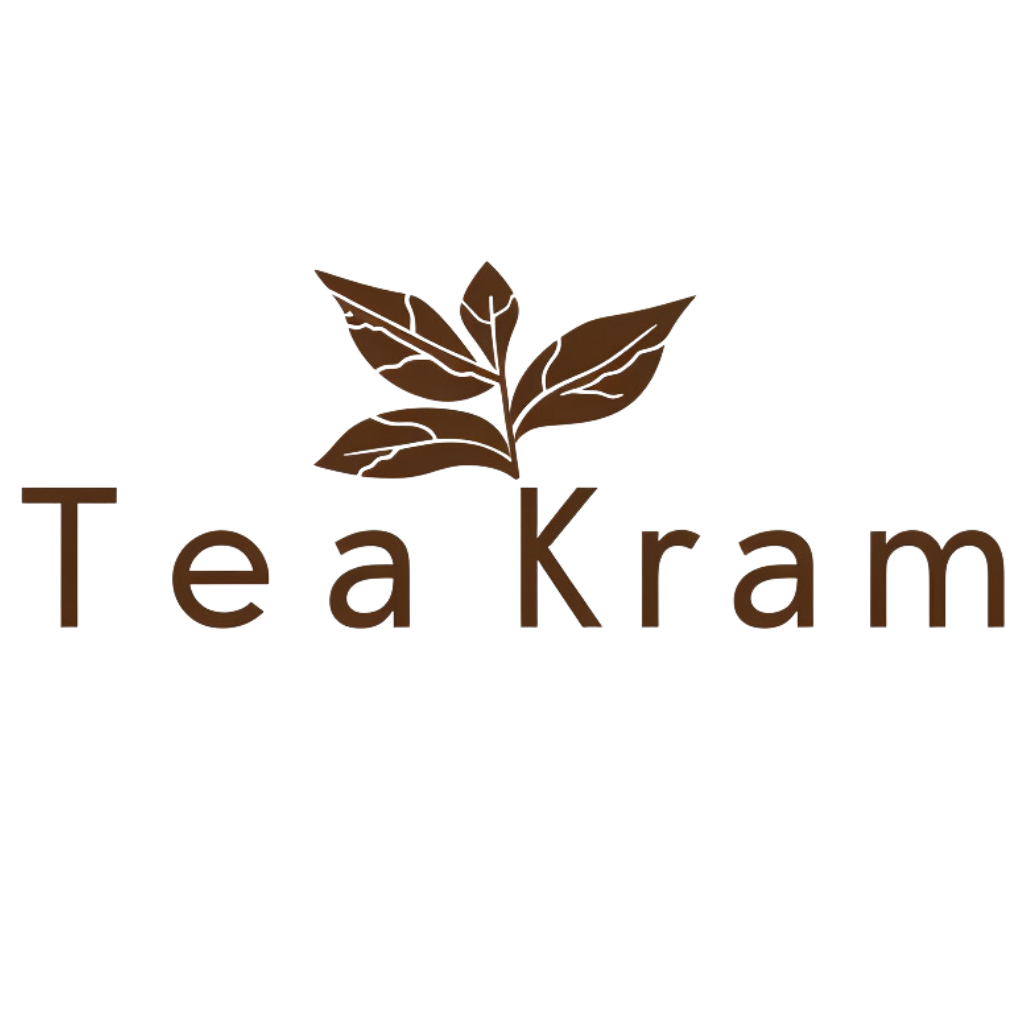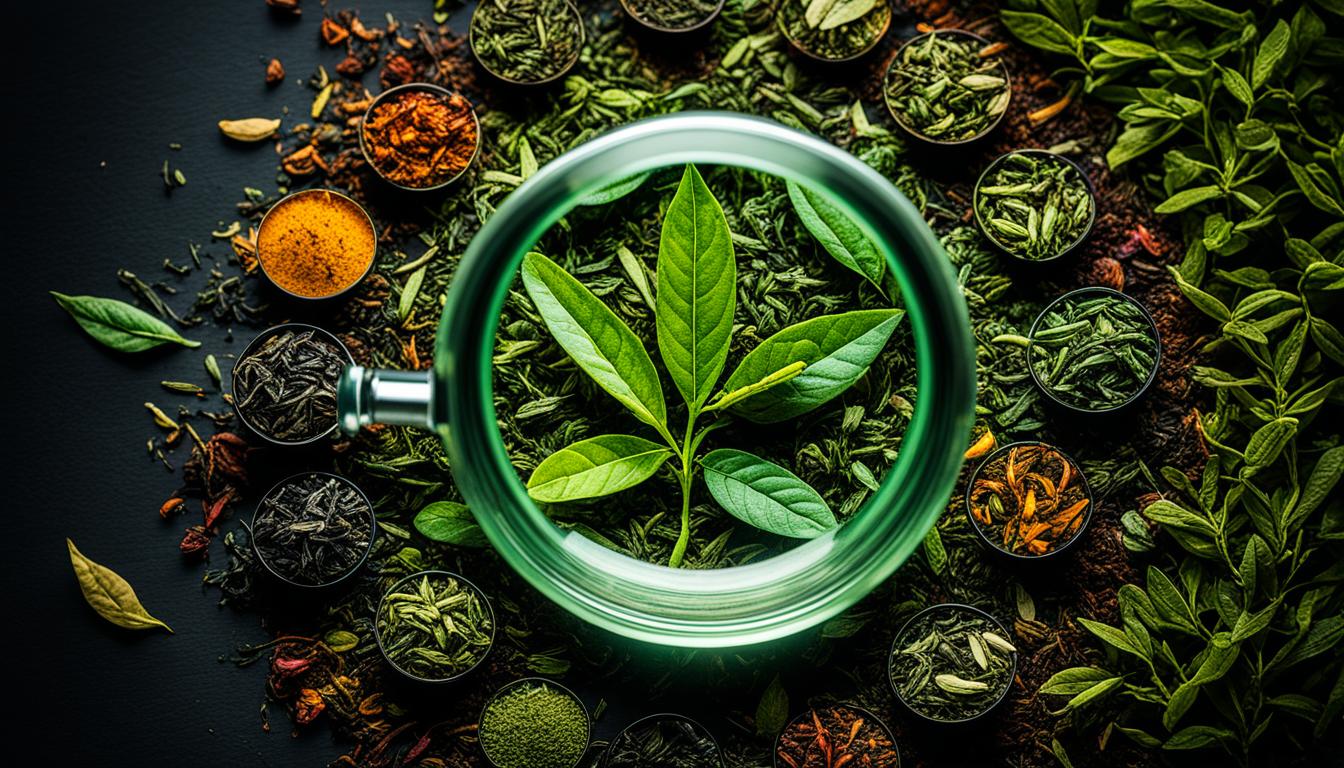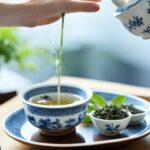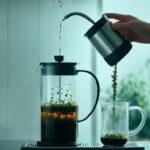Join us as we explore the complex world of tea grading standards. These standards are key in telling top-quality tea from the rest. They take us from the tea-growing hills straight to our beloved teacups. Each leaf’s journey is shaped by a detailed tea quality grading process.
This process highlights the distinct flavors and aromas of tea. By learning about Understanding Tea Grading, you can better choose and enjoy teas. Let’s dive into the nuances that make some teas stand out.
Key Takeaways
- Tea grading standards reveal critical insights into the leaves’ quality, influencing the brewing experience.
- A thorough understanding of tea quality grading helps enthusiasts discern premium varieties from the vast selections available.
- The evaluation of tea involves sensory analysis, emphasizing size, shape, and consistency of leaves.
- Gradients of tea quality grading provide a language for tea connoisseurs to evaluate and savor different blends.
- Mastering the concept of Understanding Tea Grading equips one with the expertise to choose teas that suit individual preferences.
The Intricacies of Tea Leaf Classification
Grading tea leaves is both an art and a science. It reveals the depth of Camellia Sinensis and its varieties. Learning about these grades helps us appreciate what makes a great tea. This process, rooted in tradition, varies by region and contributes to the tea’s quality.
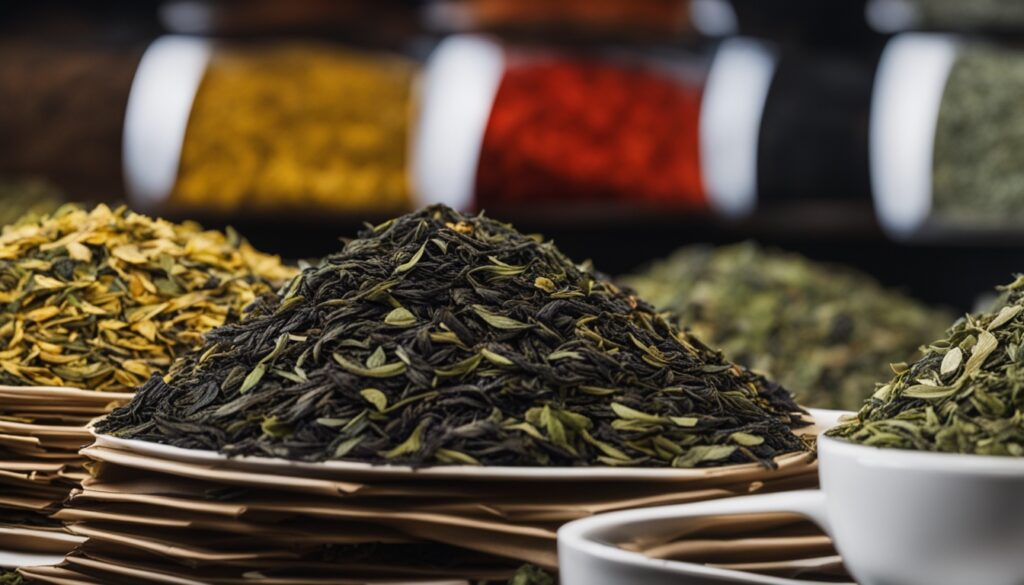
Exploring the Camellia Sinensis Varieties
We start our journey with the Camellia Sinensis plant. It has two main types: Thea Sinensis and Thea Assamica. Each has unique features and flavors because they grow in different conditions.
The Regional Impact on Tea Quality Grading
The area where tea grows plays a big role in its quality. This concept, known as terroir, includes local weather, soil, and altitude. Famous tea regions like Darjeeling, Assam, and Ceylon benefit from perfect conditions. These bring out unique qualities in the tea.
Recognizing Higher Quality: Identifying Fine Tea Grades
To spot fine tea, experts look for specific signs of quality. FTGFOP1 is a top grade for Darjeeling teas. It shows the care taken in picking the leaves. This results in a unique and tasty tea.
| Grade | Region | Description | Leaf Appearance |
|---|---|---|---|
| FTGFOP1 | Darjeeling | Finest Tippy Golden Flowery Orange Pekoe 1 | Abundant with young tips, uniform leaves |
| OP | Ceylon | Orange Pekoe | Long, slender, wiry leaves without tips |
| BOP | Assam | Broken Orange Pekoe | Smaller, broken leaves with some tips |
This article helps make sense of complex tea grading terms. It highlights the importance of region and the pursuit of fine grades. For tea lovers, the grade tells a story. It’s about history, growing, and making tea. Every cup offers a taste of this rich narrative.
Understanding Tea Grading: Decoding the Terminology
Diving into the world of teas reveals the importance of “Understanding Tea Grading”. It shows us the different quality levels of tea. Tea grades tell us about the size and look of the leaves, and their flavor and brewing qualities. Whole leaves are often seen as the best because they are processed the least. This keeps their natural flavor.
Tea lovers learn about terms like “Orange Pekoe” (OP) and “Tippy Golden Flowery Orange Pekoe” (TGFOP) when exploring tea grades. Each term means a specific tea grade with unique features. These terms help tea fans know the tea’s origin, even the exact place it was grown.
Here, we have a simple guide that shows the difference between whole and broken tea leaves:
| Grade | Description | Leaf Appearance | Taste Profile |
|---|---|---|---|
| Whole Leaf | Full, unbroken leaves preferably with tips | Uniform and visually intact | Delicate and complex |
| Broken Leaf | Partially crushed or broken leaves | Irregular fragments | Strong and brisk |
This detailed tea classification helps us enjoy tea’s different feels. Broken leaves have a strong taste but are lower in grade. Whole leaves have a gentle taste, showing their high quality.
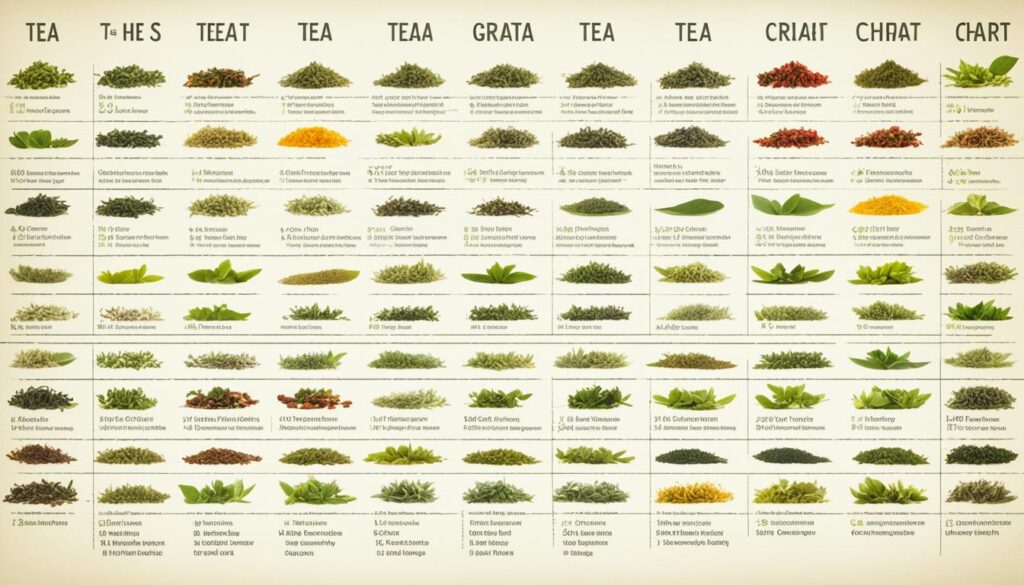
Tea grading varies with the type of tea, like green or oolong teas. This shows the tea world’s richness and variety. Getting to know tea grading better lets us enjoy tea even more. It helps us value this ancient drink deeply.
The Significance of Tea Grading Standards
To really understand tea, you must know about tea grading standards. These standards help tell the difference between qualities and tastes. It’s more than just codes. It’s about the care, origin, and journey from leaf to cup.
Setting the Bar for Excellence: Highest Tea Grade Benchmarks
Learning about the highest tea grade is where the search for great tea starts. FTGFOP1 stands at the top, showing what premium tea looks like. This grade shows uniform leaves and many tips, signs of top quality. Every cup brewed shows the effort behind it, making a unique experience.
Global vs. Local Standards: The Tea Classification System
Tea grading has a global framework, but it varies by region based on traditions. From Ceylon’s valleys to China’s mountains, grading changes to match local preferences. These differences create a world of tea standards that enrich the global scene.
Here’s how different places grade their tea:
| Region | Highest Grade | Description |
|---|---|---|
| India (Darjeeling, Assam) | FTGFOP1 | Shows teas with the finest leaves, a sign of careful picking and making |
| Sri Lanka (Ceylon) | OPA (Orange Pekoe A) | Means big, wiry leaves that make a light tea |
| China | Superfine | Marks a top-notch tea with great smell and taste, often handmade |
| Japan | Yabukita | Points to a prized type, not a grading level |
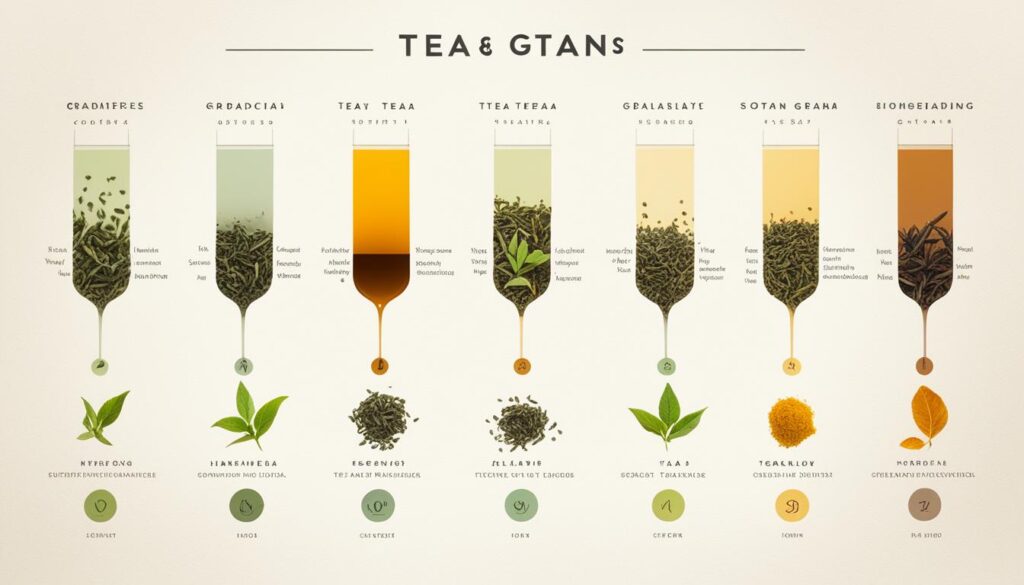
In the end, tea grading standards share a deep story. They fill a simple tea cup with tradition, skill, and global diversity. These marks are not only quality signs. They’re part of a worldwide tea language.
Tea Grade Terminology: A Closer Look at Types of Tea Grades
Exploring tea introduces us to a complex language. It shows the quality and detail in each blend—tea grade terminology. This naming system helps both experts and beginners. It gives hints about tea grades, their flavors, aromas, and how strong they brew.
Whole Leaf Grades: Understanding FTGFOP and Beyond
The whole leaf grades are top quality, with FTGFOP standing out. This means Finest Tippy Golden Flowery Orange Pekoe. These premium leaves are picked and processed with care. They include lots of tips, offering a subtle and rich flavor.
Broken Leaf and Fannings: Assessing BOP and CTC Teas
Moving to other tea grades, we find BOP, or Broken Orange Pekoe, and CTC teas. These are more processed, leading to bolder tastes. BOP leaves get broken, making them infuse faster and taste stronger. CTC teas are crushed, torn, and curled into uniform pieces. This makes them steep quickly, perfect for tea bags.
Dust Tea: The Smallest Fragment with a Mighty Presence
Despite its name, dust tea plays a big role in tea. It’s made of tiny tea leaf bits, brewing quickly and tasting strong. It’s popular for those wanting a quick tea fix. And it’s mostly used in instant teas and affordable tea bags.
Every tea grade has its place, appealing to various tastes. From the delicate whole leaf FTGFOP to the strong dust tea. Tea grades offer a wide range of flavors for us to discover.
The Art of Tea Production: From Leaf to Cup
The tea production process combines old traditions and new techniques. The CTC method, which stands for crush, tear, and curl, has changed how tea leaves are made. This method produces a strong tea that people around the world love.
Tea leaf rolling is the first step to make the leaves ready to drink. This part of the process not only shapes the leaf but also starts the tea fermentation process. Rolling the leaves breaks their cell walls. This action releases oils and enzymes that start fermentation. Fermentation is key to the tea’s taste and color, especially in black tea.
Rolling and fermenting the leaves is an art form. These steps bring out the best flavor of the tea by the time it dries. Then, it’s ready for us to enjoy its rich taste.
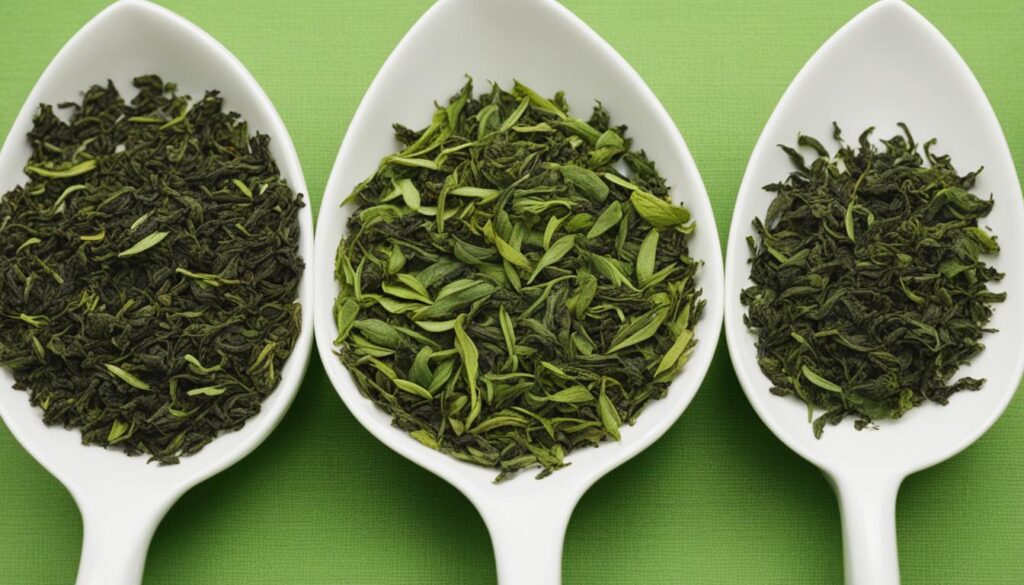
| Stage | Description | Objective |
|---|---|---|
| Leaf Harvesting | Picking the best tea leaves. | Gather materials for making tea. |
| Withering | Lowering moisture in the leaves. | Get leaves ready for rolling and oxidation. |
| Tea Leaf Rolling | Breaking cell walls by rolling leaves. | Start releasing oils for fermentation. |
| Fermentation/Oxidation | Letting rolled leaves oxidize. | Create the tea’s unique color and taste. |
| Drying | Stopping oxidation by removing moisture. | Keep the flavor stable in the tea. |
| Grading | Sorting tea by size and quality. | Make sure the tea is consistent for selling. |
After these stages, the CTC tea is carefully graded. This ensures each batch is top quality. Then, the tea is packaged and sent out. It’s ready to refresh and delight people all over the world.
Tea Cultivation and Harvesting: A Global Overview
The journey of tea from field to cup begins with tea cultivation. This art differs greatly across various locations. For instance, Assam’s tea is known for its bold and malty taste. This flavor comes from its wet and lush lands. Meanwhile, Darjeeling’s high mountains give its tea a delicate, muscatel touch. Tea lovers from around the world seek this. Similarly, Ceylon’s wide tea fields produce a rich flavor, perfect for many tea blends.
Tea harvesting plays a crucial role in creating a tea’s unique taste. Traditional harvesting methods involve picking the best two leaves and a bud by hand. This careful selection helps keep the tea’s flavors and aromas intact. On some tea plantations, machines help speed up the process. Even then, quality remains a top priority. Tea plants can live for hundreds of years, showing how nature and human care work together.
Walking through tea estates is like seeing a team effort of humans, machines, and nature. These places, often hilly and covered with tea plants, show tea’s rich history and bright future. But it’s not just the taste that matters. Each leaf holds stories that make drinking tea a special experience.
Conclusion
The journey of learning about tea grading ends with a richer understanding of this special drink. Understanding quality assessment improves the tea-drinking adventure. The standards for categorizing tea show the skill and effort in every leaf.
Mastering tea grading is like learning to enjoy a mix of flavors in just one cup. It makes the tea experience better.
The benefits of tea grading help us pick the best tea for our tastes. With knowledge, we can explore different teas with confidence. From strong Assam teas to the gentle Darjeeling, we learn by tasting. This makes us more than just buyers; we’re part of a long-standing tradition across the world.
In conclusion, knowledge of tea grading is crucial for everyone who loves tea. Whether you’re just starting or have loved tea for years, it helps you choose the best. Tea is timeless, linking history, heritage, and a quest for perfection. Every sip lets us taste this deep history and dedication.
